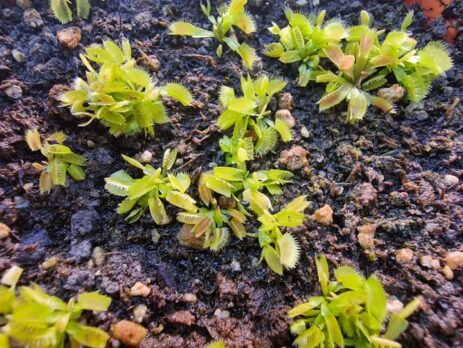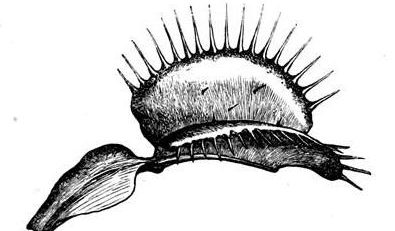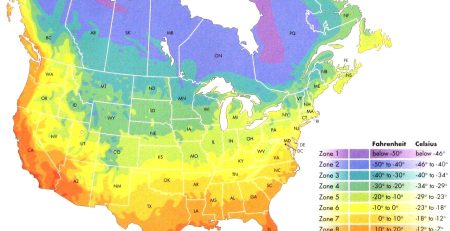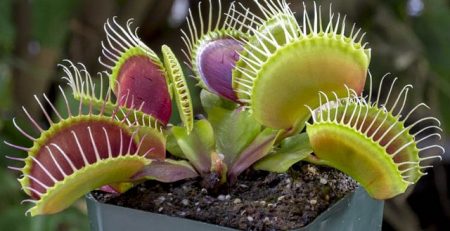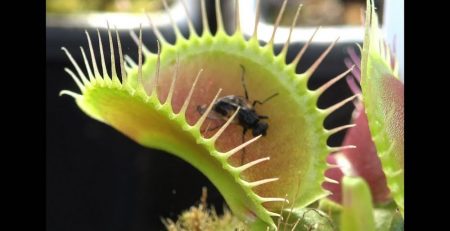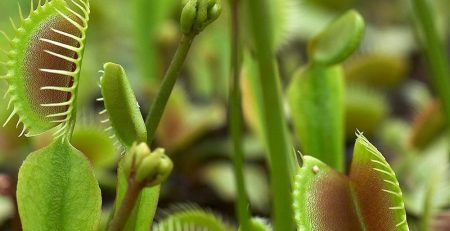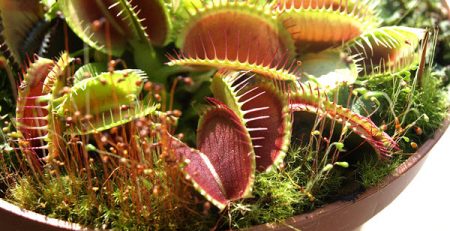Carnivorous Plant Seed Sowing Tips
Seed Storage:
Store seeds in a dry, sealed plastic bag in the refrigerator until you’re ready to sow them. Germination rates decline over time, but well-stored seeds can last a long time. Most Drosera, Drosophyllum, and Byblis seeds can remain viable for years, even decades. Sarracenia and Darlingtonia seeds can be stored for at least a few years, while Pinguicula and Utricularia have a shorter shelf life. Nepenthes seeds don’t store well and should be sown as soon as possible.
Stratification:
Many temperate carnivorous plant seeds require a period of cold, damp conditions to germinate, known as stratification. If you live in an area with mild winters, sow the seeds outdoors in late winter so they experience about a month of cold nights between 20-40°F. Protect the seeds from rain. If this isn’t possible, place the pot in the refrigerator for 4 weeks after sowing. Once removed, keep the pot in a warmer, well-lit spot to encourage germination. Ensure the soil stays wet. If space is limited, you can store seeds a month before spring by placing them in a damp bag with long-fibered sphagnum moss. Sow in spring when night temperatures are above freezing.
Covering Seeds:
Maintaining high humidity and keeping the soil consistently damp is crucial for good germination. You can cover the pot with a translucent dome or place it in a plastic bag to help with this, ensuring there’s some ventilation to prevent fungus and overheating. Place the covered seeds in bright, indirect light, and avoid direct sunlight for long periods, as this can harm the seedlings.
Venus Flytraps (Dionaea):
Sow seeds from late winter to early summer in a bright location, sheltered from hot afternoon sun. Keep the soil wet, and using a cover can help maintain moisture. Sprinkle the seeds on top of a 3:1 peat-to-sand mix or a 50/50 mix of peat and washed sand. Do not bury the seeds. Use a 4-5 inch pot for each seed pack. Stratification may improve germination. For indoor sowing, use a terrarium setup similar to that for highland Nepenthes.
American Pitcher Plants and Cobra Plants (Sarracenia & Darlingtonia):
Sow these the same way as Venus Flytraps, but they require stratification first. Seeds generally germinate 6-8 weeks after stratification, though some may not sprout until the following year.
Sundews (Drosera):
- Temperate: Follow the same process as for Sarracenia. Examples include Drosera filiformis, intermedia, anglica, and rotundifolia.
- Subtropical: Sow like Venus Flytraps. Examples include South African rosetted sundews and Brazilian sundews.
- Winter-Growing: These can be challenging to germinate. In regions like Western Australia or South Africa, wildfires often trigger germination. To simulate this, soak seeds in Gibberellic acid for 24 hours or sprinkle them with diluted liquid smoke. Some growers leave seeds in a hot area over summer. You can also try burning peat moss over the pots as recommended by Allen Lowrie. Sow seeds in fall on a 2:1 mix of sand and peat. Germination may take months or even years. Examples include tuberous Drosera, cistiflora, pauciflora, trinervia, alba, and afra.
- Tropical: Sow like Lowland Nepenthes. Examples include Drosera burmanni, intermedia ‘Cuba’, madagascariensis, and the petiolaris complex.
Rainbow Plants (Byblis):
Sow like tropical sundews. Smoke treatments can increase germination.
Dewy Pines (Drosophyllum):
Scarify seeds by gently rubbing them with a whetstone until a small white spot appears. Then soak in water for 24 hours. Sow on a mix of equal parts peat, sand, perlite, and lava (if available). Cover the seeds. Transplant seedlings soon after they sprout, as they quickly develop long taproots.
Butterworts (Pinguicula):
For Mexican species, sprinkle seeds on the Dewy Pine mix and sow as for Nepenthes or subtropical Drosera. Temperate species should be treated like temperate sundews.
Tropical Pitcher Plants (Nepenthes):
Sow these seeds in a terrarium with T-5 fluorescent lights on a 14-hour photoperiod. Keep the lights about 18 inches above the plants, and ensure proper ventilation to prevent overheating. Warm temperatures between 75-80°F will boost germination. Highland Nepenthes need cooler nights to thrive. Sow seeds on a mix based on New Zealand sphagnum moss, with some finely chopped sphagnum on top. Keep the soil consistently moist.
MaxSea Fertilizer:
After germination, mist seedlings with a solution of 1/4 teaspoon per gallon of water. Monthly foliar feeding will speed up growth, but be cautious not to over-fertilize, as this can lead to moss and algae overtaking the seedlings.

